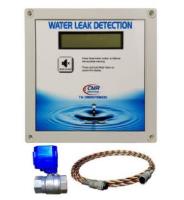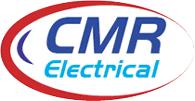 Add My Company
Add My Company
Sign In

One of the questions we occasionally get asked is “do you do a distance to leak water detection system”, the answer is “yes”. Our DMWD unit can have up to four zones and will display the measurement from the controller to the leak… so why don’t we recommend it for critical areas?
Whilst the principle of getting a distance to the leak sounds great, in practice the measurement given by ours and our competitors systems could be totally wrong or meaningless for one or more of the following reasons.
- The drawing showing the cable route and distance points is missing or wrong.
- The detection cable could have been moved during alterations.
- More than one leak is touching the cable.
- Dust, dirt or any conductive contaminant on the cable.
- Failure of external sensing unit.
- The system is locked out and not looking for leaks because there’s an existing leak.
- Because of cable layout, a leak could be shown at 35m but in reality, its only 5m from the alarm unit.
- Confusion as to where “Leak at 19 metres” is.
What other disadvantages are associated with installing a distance to leak water detection unit.
- The unit must be next to a layout drawing with accurate distances shown every few metres.
- Some systems on the market need on site calibration of the system for them to work.
- The installation must be carried out by approved contractor, adding cost to the installation.
- Susceptibility to false readings due to cable damage.
- Cost to replace damaged or faulty cables.
- Extremely high equipment and installation costs.
- On some systems there is no measurement when the cable becomes faulty or disconnected requiring someone to inspect the entire length of cable.
Over the years we have replaced a number of distance measuring systems not because the system wasn’t working, but because the controller was stuck on detecting an old leak in an unventilated area or a faulty cable. To overcome this, some manufacturers use a zonal distance to leak system where each detection cable has its own electronic monitoring unit allowing the controller to add the lengths together to determine the distance to the leak. Or to put it another way, an expensive over complicated zonal water detection system.
So, what do we recommend?
Distance measuring systems are good in applications such as stud wall voids, or between floor and ceiling voids, where the cable route can’t be changed, it’s not easy to see the leak and a hole will be needed to find the source of the leak. But for critical areas such as server rooms and plant rooms, the zonal system is best. Not only do you get a more reliable system, you also get sensitivity adjustment allowing fine tuning for areas that suffer from high humidity or damp. Another advantage of a zonal system is easy of identifying where the leak is. For example, let’s say we have a floor with a small server room, five offices, two tea points, male and female toilets, ten areas in total. In stead of be given a distance of 35 meters to the leak, on a zonal system each room can be individually identified so maintenance staff will immediately knows the leak is in the server room.
For more information on Why is a water detection system that measures the distance to the leak not as good as some consultants think? talk to CMR Electrical
Enquire Now
List your company on FindTheNeedle.
